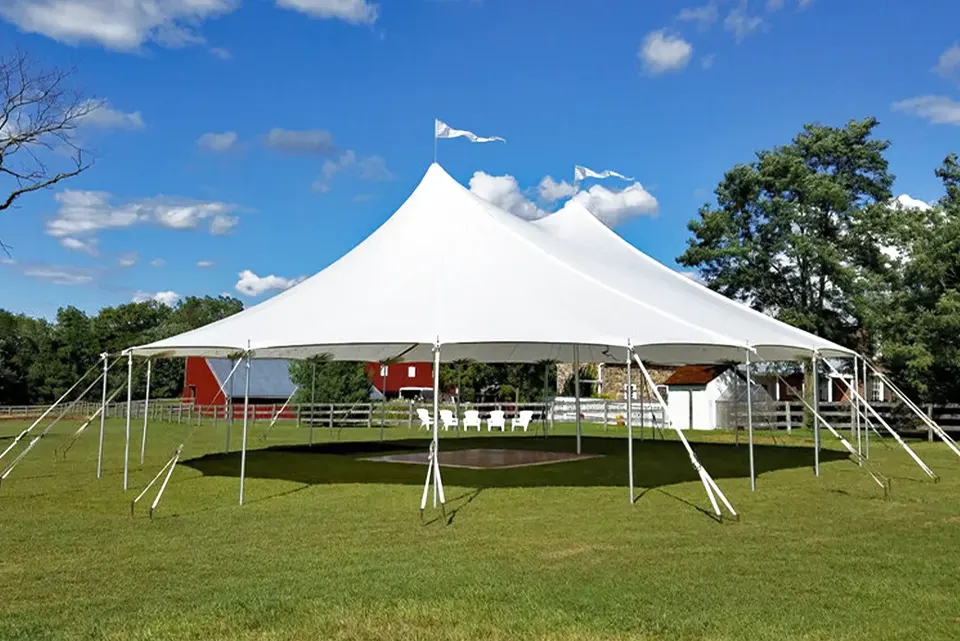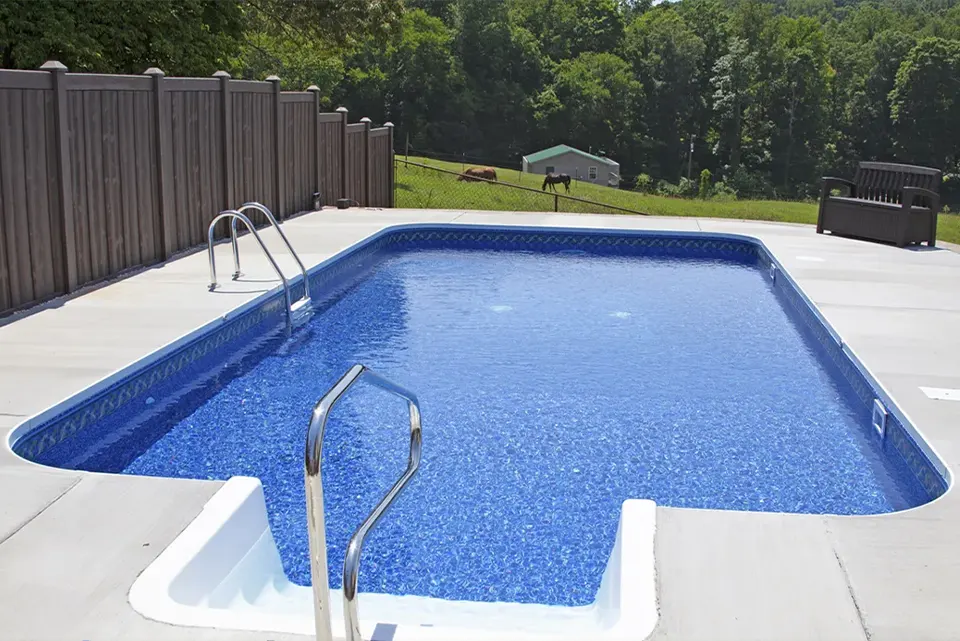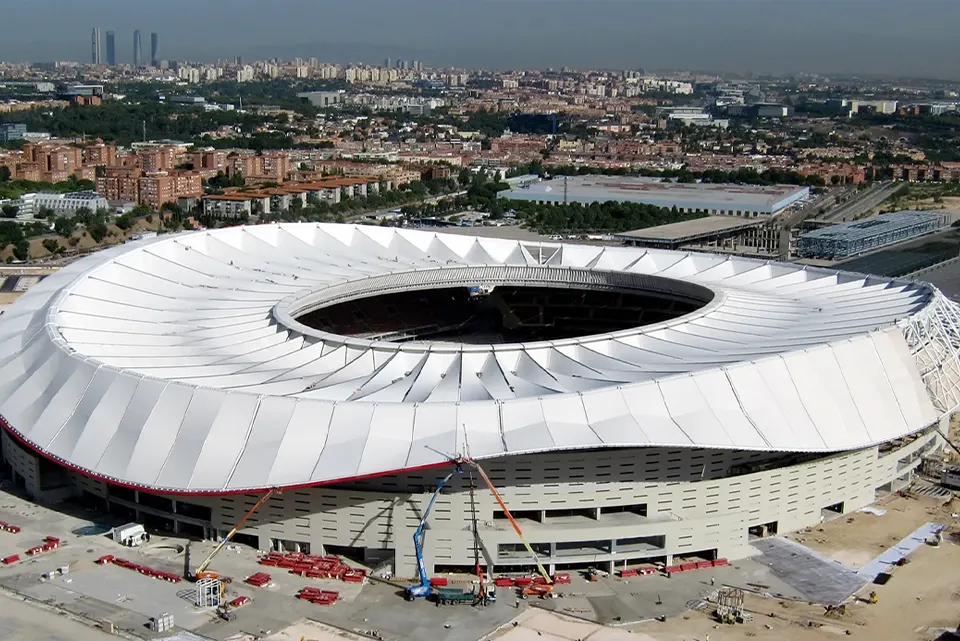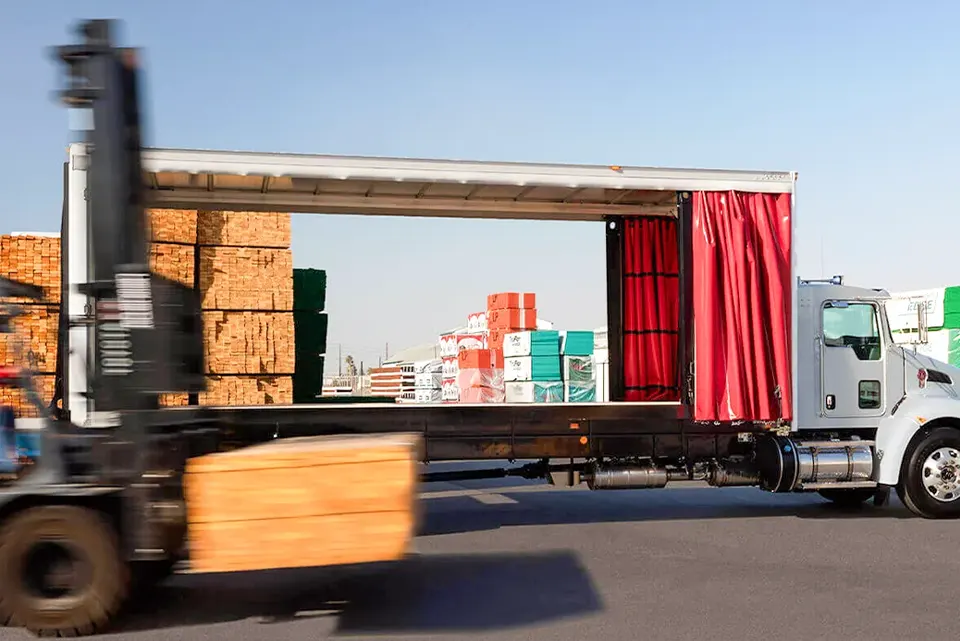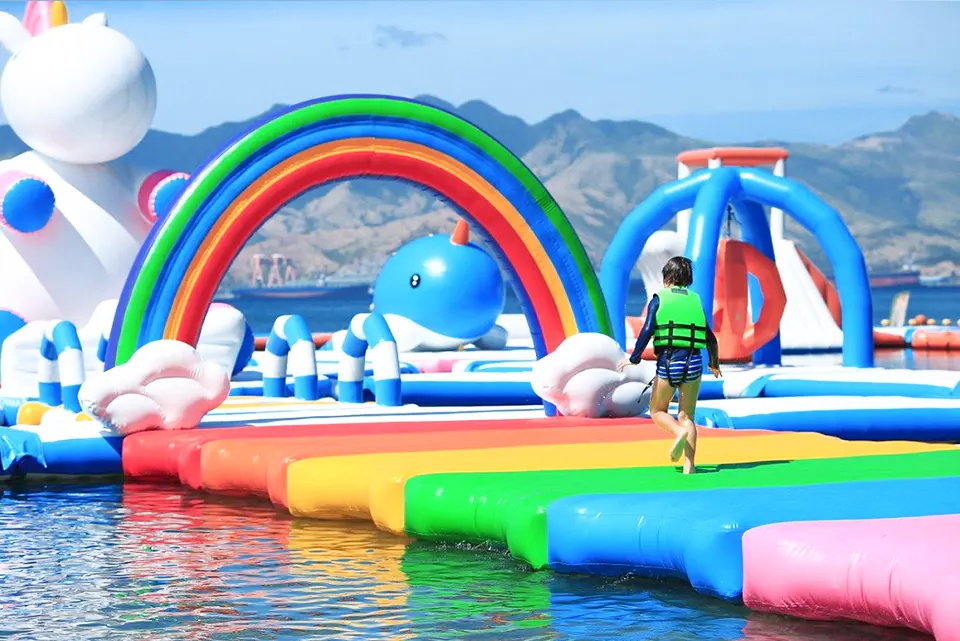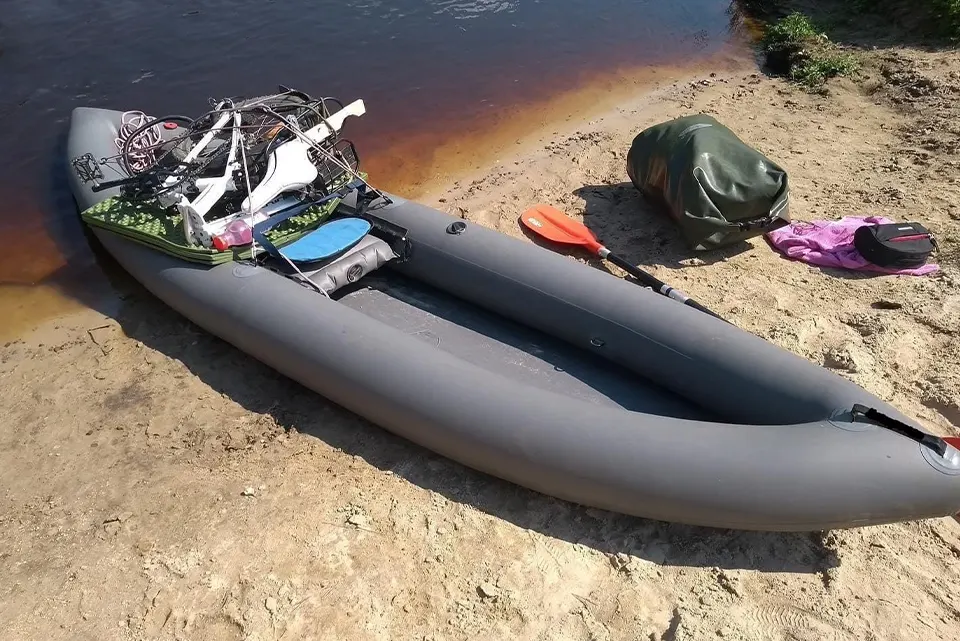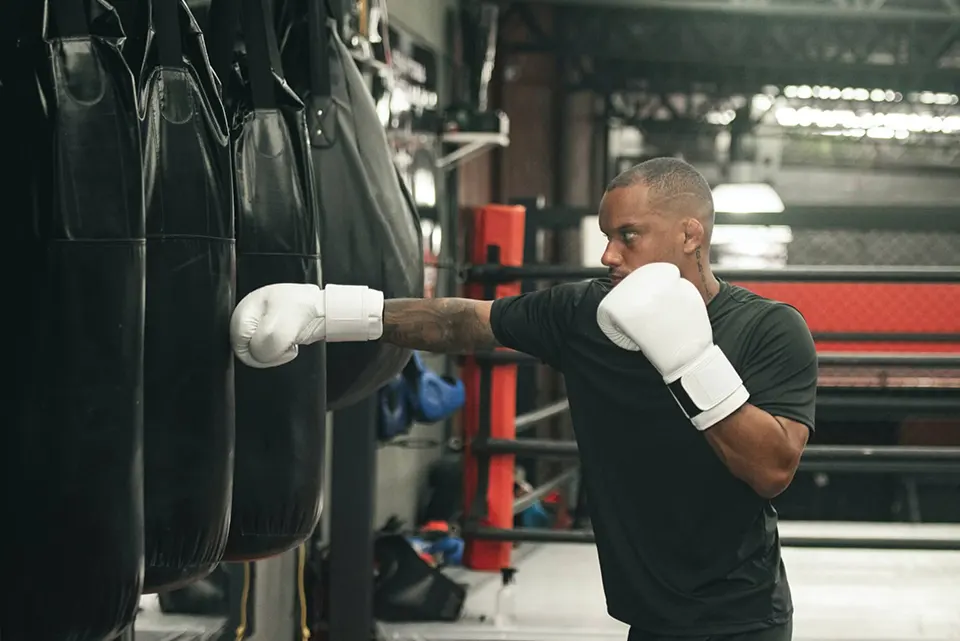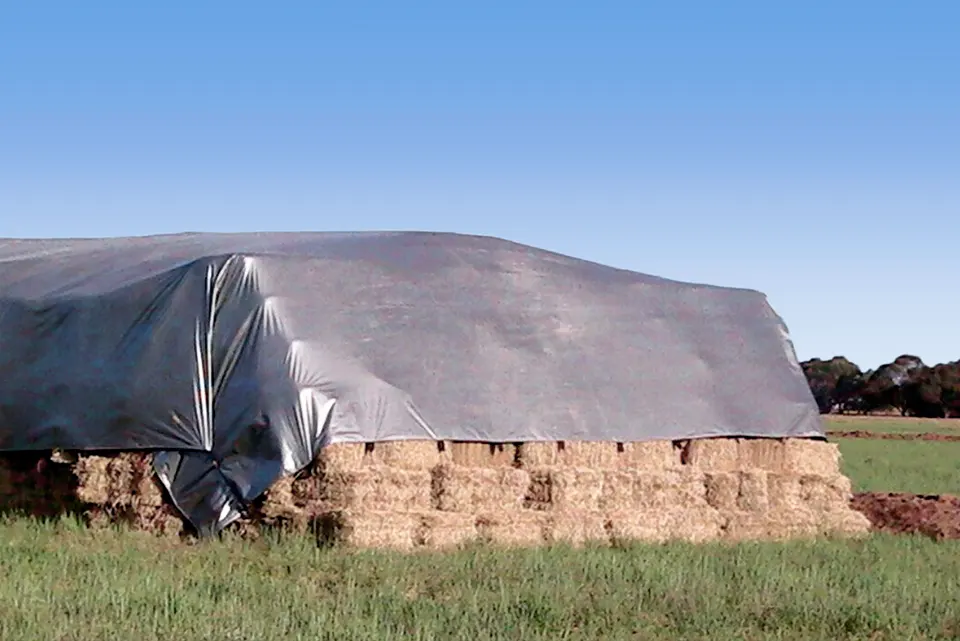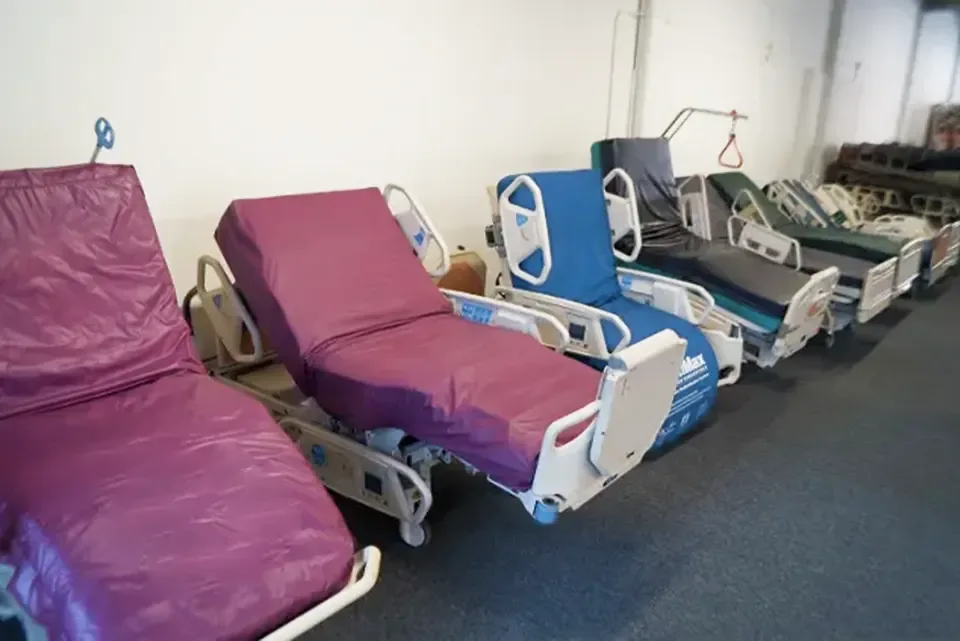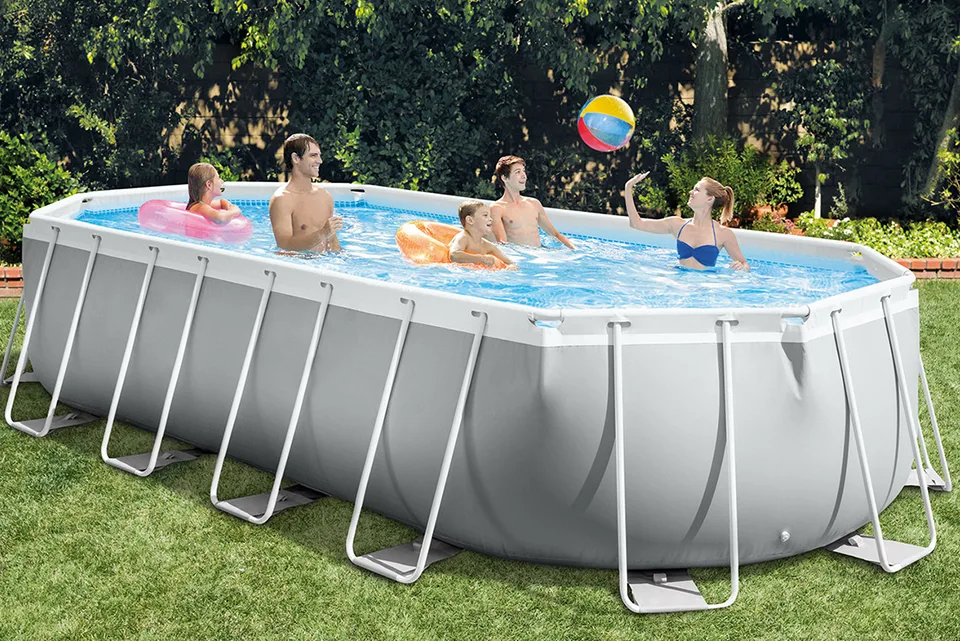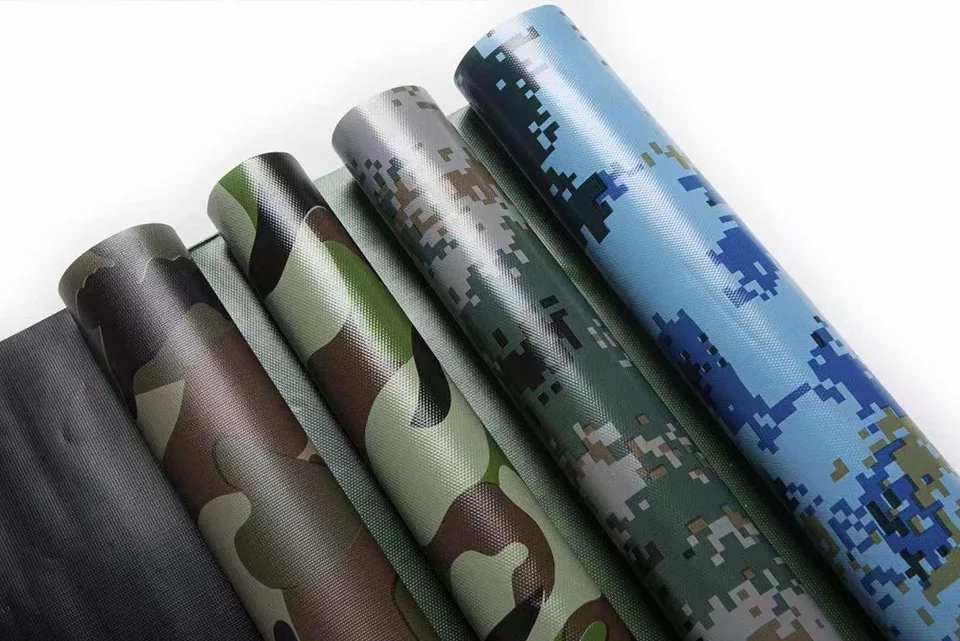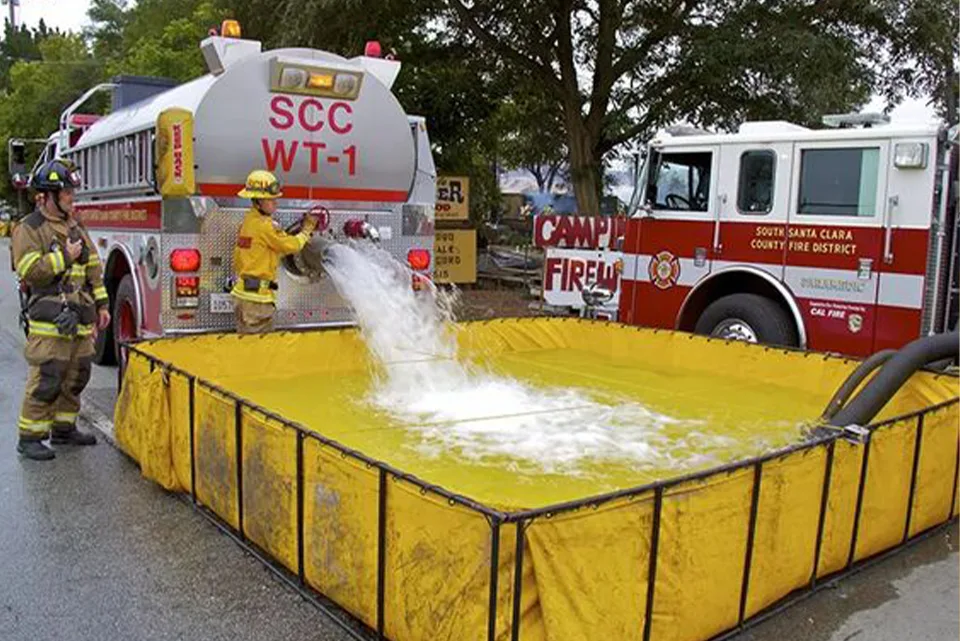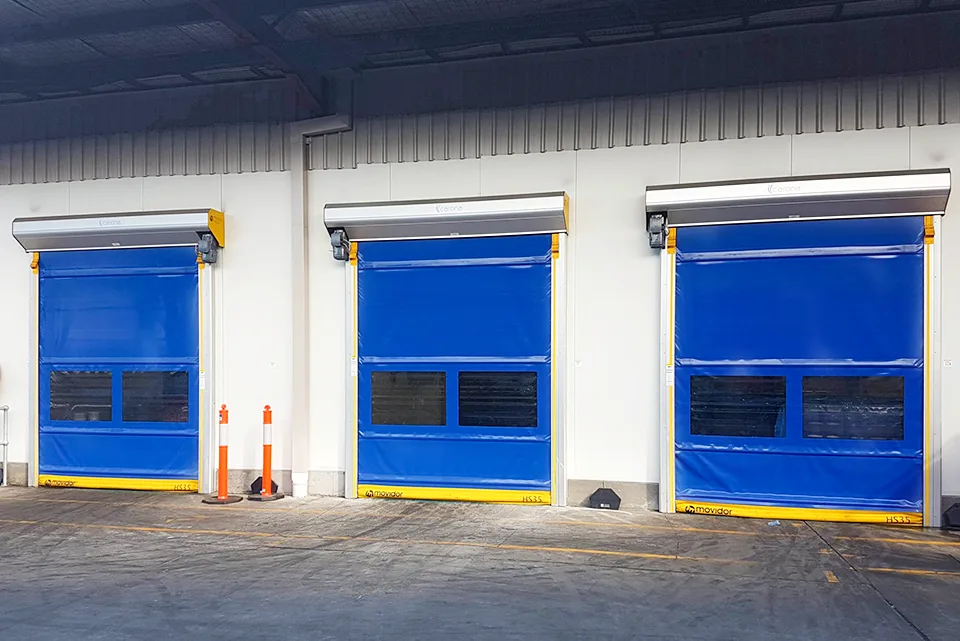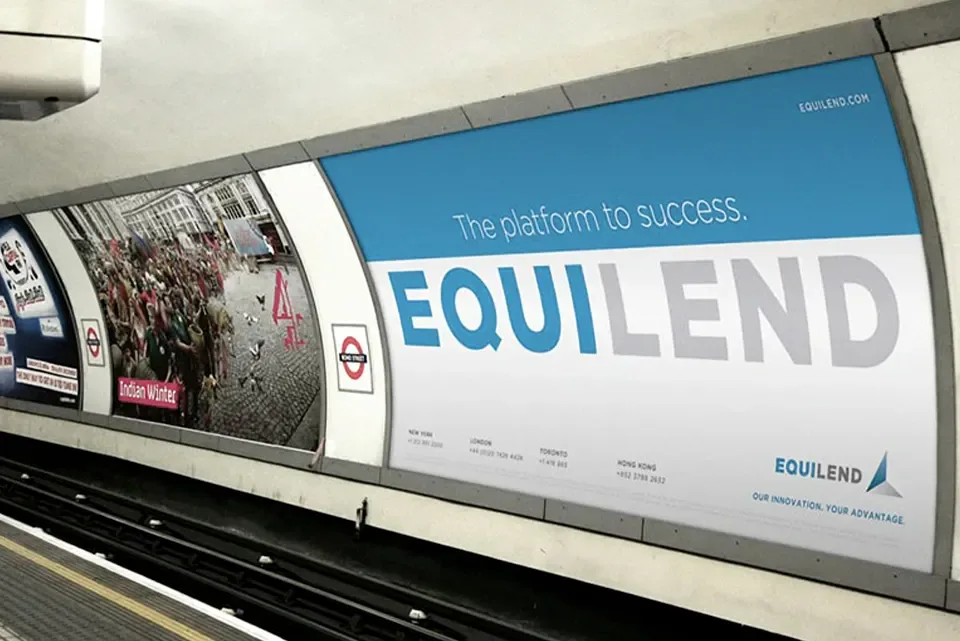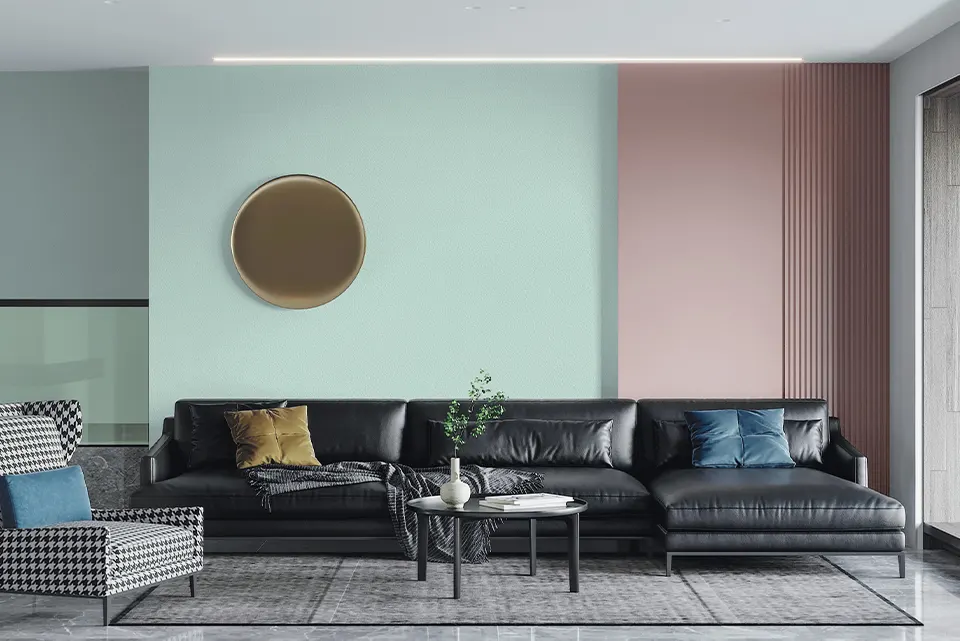PVC tarpaulin: The Ultimate FAQ Guide
The PVC tarpaulins Guide has compiled 15 FAQs that will help you understand all aspects of vinyl tarp. So if you have any questions, this guide is sure to have your answers.
Let me be your expert in the field.
What is PVC tarpaulin?
PVC tarpaulin is a heavy-duty PVC tarpaulin material made of polyvinyl chloride (PVC) and polyester fiber-based fabric. In the field of industrial fabrics, PVC tarpaulin fabrics are mainly divided into two types: PVC coated tarpaulin and PVC laminated tarpaulin. PVC coated tarpaulin fabric is also a type of PVC coated fabric.

PVC: PVC, a synthetic resin polymerized from vinyl chloride, is also the core material for producing PVC tarpaulin fabrics. Before PVC is made into PVC coated tarpaulin, it is always necessary to add additives to convert it into the compounds we need, such as UV stabilizers, flame retardants, environmental agents, anti-static additives, antibacterial agents, oxidants, plasticizers, Heat stabilizers, pigments, etc. The choice of special additives determines the performance of waterproof PVC tarpaulin rolls, and it is possible to suggest the properties you require before working with a PVC tarpaulin manufacturer.
Base fabric (Mesh): Base fabric is divided into polyester, cotton, fiberglass, nylon, Oxford cloth, etc. The waterproof PVC tarpaulin is mainly made of polyester fiber. Its unit is expressed by the weight of the thread (denier) and the density of the weave (number of threads per inch), for example, 500D 18×17, 800D 9×9, 1000D 20×20, etc. Secondly, it is also divided into woven fabrics and knitted fabrics. The base fabric specifications determine the PVC canvas tarpaulin’s tear strength and tensile strength. The higher the specifications of the base fabric, the higher the tear strength and tensile strength. However, the specifications of the base fabric selected should be determined according to the user’s usage scenario. For example, architectural membranes and large PVC tents require high-standard base fabrics to withstand harsh environments. Choosing the appropriate base fabric specification according to the application scenario can not only reduce the price of purchasing PVC tarpaulin but also increase the service life of PVC tarpaulin material. If you don’t know what base fabric to choose for your industry materials, you can also ask us directly to provide you with reasonable suggestions.
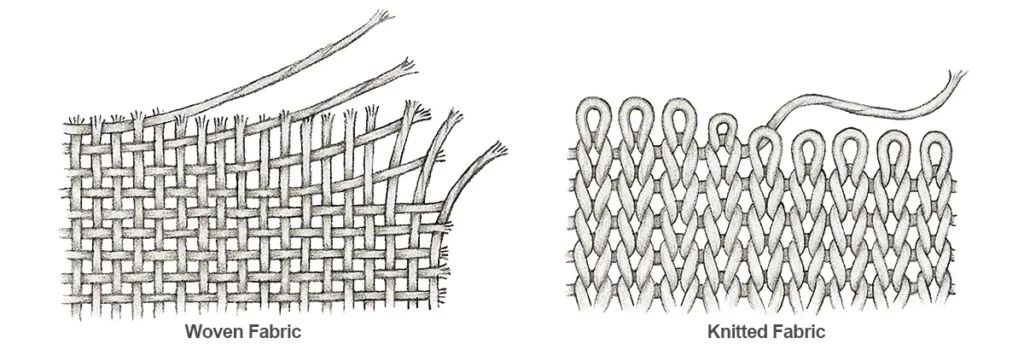
Surface treatment: The surface treatment of PVC tarpaulin is generally divided into PVDF, acrylic, and titanium dioxide. Their main function is to improve its surface properties, which mainly include the following aspects:
- Improve surface wettability: It can increase the wettability of the surface of PVC tarpaulin material, making it easier to be wetted by liquid, thereby improving anti-pollution ability and lubricity.
- Improve corrosion resistance: Chemical bonds or oxide layers will be formed on the surface of the surface-treated waterproof PVC tarpaulin, thereby increasing the material’s corrosion resistance to rainwater. Further, increases the anti-aging properties of PVC tarpaulin materials.
- Improve wear resistance: PVDF, acrylic, and titanium dioxide will form a certain nanostructure on the surface of PVC tarpaulin, thereby improving surface hardness, wrinkle resistance, and wear resistance.
PVDF acrylic and titanium dioxide surface treatment is widely used in the chemical industry, electronics, medicine, aviation, and other fields. At present, the raw material manufacturers we cooperate with are imported from abroad: Tramaco and Stahl.
Technology core: The method of producing PVC tarpaulin rolls: PVC coating and PVC lamination. PVC lamination is divided into (hot melt calendaring and cold lamination). Each method has different advantages and uses. PVC coated tarpaulin rolls have good flexibility and are suitable for large-scale building materials; PVC laminated tarpaulin rolls have good air tightness and are suitable for making flexitanks, inflatable castles, etc. Both methods can produce 5.1m PVC tarpaulin rolls.
The choice of final manufacturing method depends on the specific requirements of the PVC tarpaulin canvas fabric, including its texture, size, color, use, performance, strength, and appearance. Each method has its advantages and allows for customization to meet the needs of a variety of industries and applications such as transportation, construction, agriculture, aviation, industrial, advertising, petroleum, aquaculture, and outdoor activities, among others.
What are the properties of PVC coated tarpaulin?
PVC coated tarpaulin fabric has a variety of key properties: waterproof, flame retardant, anti-aging, antibacterial, environmentally friendly, antistatic, anti-UV, etc. Before we produce PVC coated tarpaulin, we will add corresponding additives to polyvinyl chloride (PVC), to achieve the effect we want. Making it a popular choice for a variety of outdoor protection and industrial applications. When working with FLFX, the performance of these PVC tarpaulins can be customized according to user requirements.

- Waterproof: PVC coated tarpaulin is highly waterproof and is ideal for protecting goods and equipment outdoors from snow, rain, and moisture.
- Weather resistance: PVC coated tarpaulin has a temperature resistance of -30℃ ~ +70℃, and can resist various harsh outdoor environments and weather, including ultraviolet radiation, extreme temperatures, and humidity. Very suitable for African countries that are hot all year round.
- Strength and durability: Using high-standard base fabrics can greatly enhance the strength and durability of heavy duty PVC coated tarpaulin materials. It can withstand wear, tear, and punctures and is suitable for heavy-duty applications.
- UV resistant: PVC tarpaulin materials are often treated with UV stabilizers, which help prevent damage caused by prolonged exposure to sunlight. Enhanced UV resistance is also one of the reasons for extending the service life of materials.
- Fire resistance: Some specific scene applications require PVC coated cloths to have B1, B2, M1, and M2 fire resistance levels to improve their safety in fire-risk environments and ensure that they can effectively prevent fire-related hazards.
- Chemical resistance: Specific additives and treatments are added to PVC to withstand a variety of corrosive chemicals, oils, acids, etc., making it suitable for use in industrial and agricultural environments where there may be contact with these substances.
- Flexibility: PVC coated tarpaulin fabric remains flexible even in cold temperatures, ensuring it can be easily maneuvered and used in a variety of applications.
- Tear Resistance: The PVC coated fabric is tear-resistant, which is critical in applications where there will be direct contact with sharp objects or pressure.
- Customizability: PVC tarpaulin material can be customized in size, color, functionality, and packaging to meet the specific requirements of different customers.
- Easy to maintain: PVC coated nylon tarpaulins are relatively easy to clean and maintain. To maintain the appearance of products for outdoor applications, they need to be manually cleaned regularly with mild soap and water to remove dirt and stains. Like large building materials, we would recommend adding PVDF treatment to the surface of the material, which allows the PVC tarpaulin to have its cleaning function.
Together, these properties make vinyl coated PVC fabrics a versatile and reliable choice for a variety of applications, including truck covers, boat covers, inflatables, swimming pools, agriculture, outdoor activities, and industrial uses where protection is required.
What are the uses of PVC tarpaulin material?
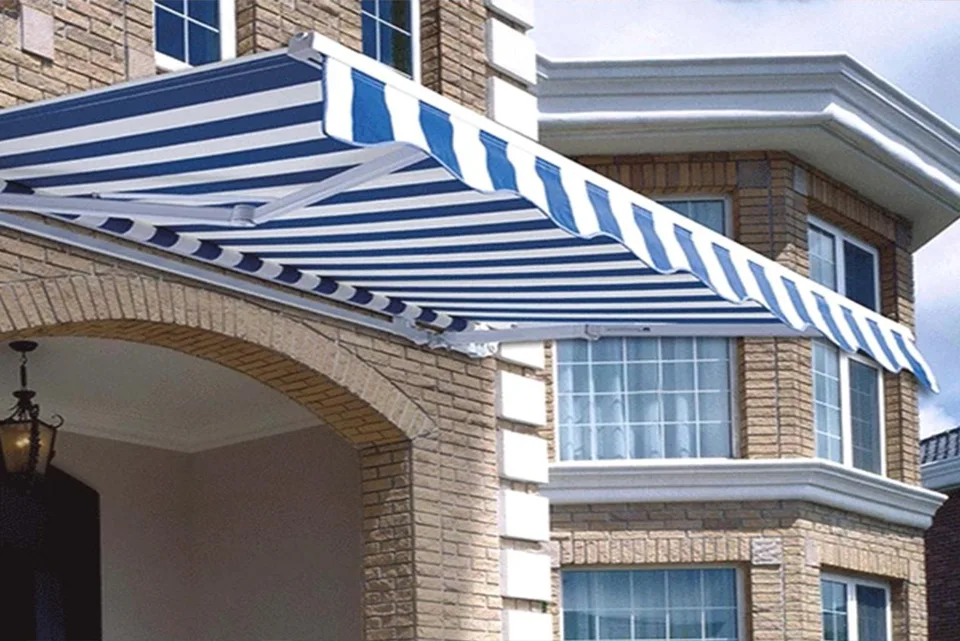
Awnings and Shades
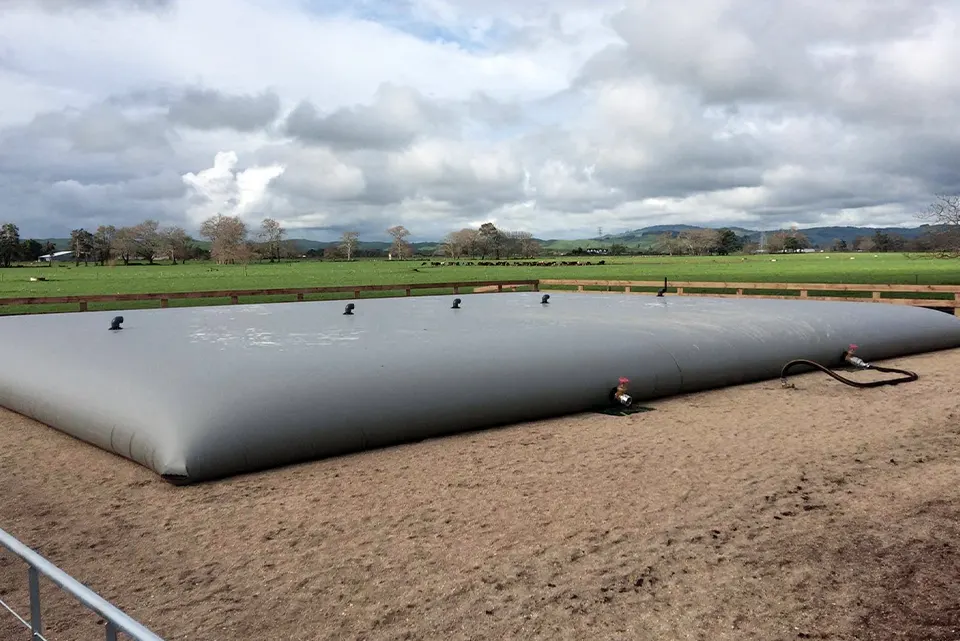
Water Storage Bag
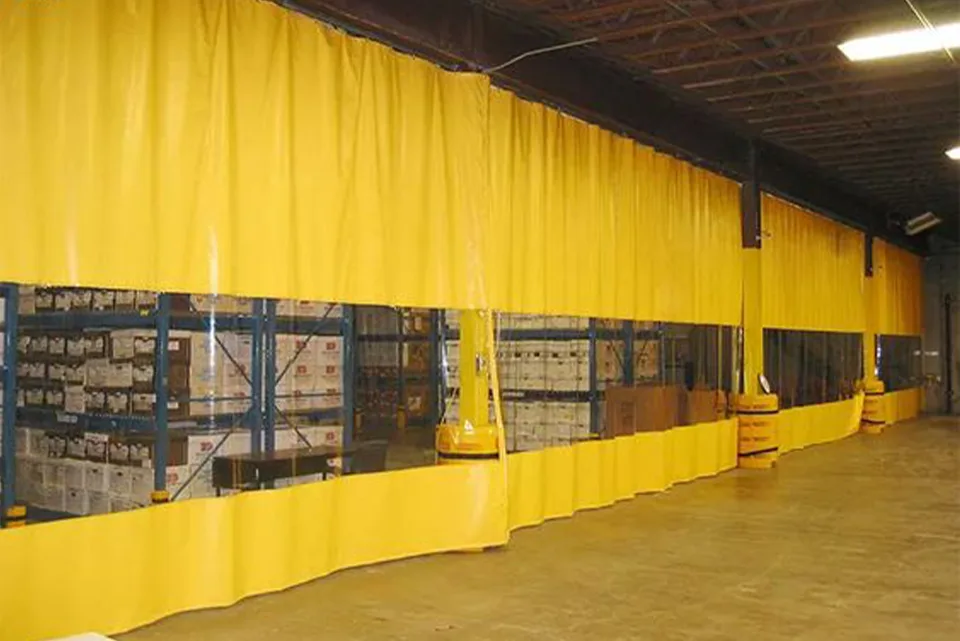
Industrial Curtain
What sizes and thicknesses are available for PVC tarpaulin fabrics?
PVC tarpaulin fabrics are available in a variety of widths and weights to suit different applications and requirements. Specific width and weight options can be selected by customers. The following are common widths and weights:
- Width: usually in meters (meters) or feet (feet)
Standard widths: 6 feet (1.83 m), 8 feet (2.44 m), 10 feet (3.05 m) and 12 feet (3.66 m).
Custom Widths: FLFX manufacturers can also produce PVC tarp fabrics in custom sizes to meet the needs of specific projects. These can be larger or smaller than standard rolls, with a maximum width of 16.4 feet (5 meters).
- Weight: usually measured in grams per square meter (gsm) or ounces per square yard (oz/yd²)
Standard weight: 450gsm (13.3 oz/yd²), 500gsm (14.8 oz/yd²), 600gsm (17.7 oz/yd²), 750gsm (22.1 oz/yd²)
Customized weight: In addition to these weights, we can also customize them according to user needs, 300gsm ~ 1700gsm (10oz/yd² ~ 60oz/yd²).
- Heavier and lighter options:
The choice of width and weight depends on the intended application of the heavy duty PVC tarpaulin fabric. Heavier PVC tarps offer greater durability and may be preferred for heavy-duty applications where tear and abrasion resistance are critical. Lighter vinyl tarpaulins are suitable for lighter applications but may not be as durable.

Can waterproof PVC tarpaulins be customized?
As long as the quantity of your PVC tarpaulin roll reaches the FLFX manufacturer’s requirements, it can be completely customized according to the customer’s specific requirements. Customization options for waterproof PVC tarpaulins include:
- Width: 1.6m/ 2.5m/ 2.8m/ 3m/ 3.2m / 5.1m (optional)
- Weight: 300gsm ~ 1700gsm (10oz ~ 60oz) (optional)
- Base fabric: 500*500D, 18*17/ 840*840D, 9*9/ 1500*1500D, 30*32 100% polyester fiber (optional)
- Color: PVC tarpaulin colors are available through RAL and PANTONE color cards, and you can usually choose the color that best suits your aesthetic preferences or brand requirements.
- Fire protection: B1, B2, M1, M2, NFPA701 (optional)
- Environmentally friendly: 3P, 6P, Reach, no heavy metals (optional)
- Surface treatment: PVDF on the front, acrylic on the back (optional)
- Other options: UV resistance, mildew resistance, self-cleaning, tensile resistance, anti-aging, etc.
- Printing and Branding: If you need graphics printed on your waterproof PVC tarpaulin material or a logo on your packaging, FLFX manufacturers can provide custom printing services and incorporate your branding or labeling.
- Package: kraft paper; rigid tube packaging (optional)
Specifications of PVC Coated Tarpaulins
| Item | Weight | Base Fabric | Length | Width |
| FLFX110/600 | 600g/㎡ | 1000 Dtex 9×9/inch | 50m; 100m | 1.1-5.1M |
| FLFX111/650 | 650g/㎡ | 1000 Dtex 20×20/inch | 50m; 100m | 1.1-5.1M |
| FLFX112/750 | 750g/㎡ | 1100 Dtex 23×23/inch | 50m; 100m | 1.1-5.1M |
| FLFX113/680 | 680g/㎡ | 1000 Dtex 18×16/inch | 50m; 100m | 1.1-5.1M |
| FLFX114/700 | 700g/㎡ | 1000 Dtex 18×16/inch | 50m; 100m | 1.1-5.1M |
| FLFX115/850 | 850g/㎡ | 1100 Dtex 23×23/inch | 50m; 100m | 1.1-5.1M |
| FLFX116/800 | 800g/㎡ | 1000 Dtex 23×23/inch | 50m; 100m | 1.1-5.1M |
| FLFX117/900 | 900g/㎡ | 1000 Dtex 30×30/inch | 50m; 100m | 1.1-5.1M |
Specifications of PVC Laminated Tarpaulins
| Item | Weight | Base Fabric | Length | Width |
| FLFX118/500 | 500g/㎡ | 1000 Dtex 9×9/inch | 50m; 100m | 1.1-5.1M |
| FLFX119/610 | 610g/㎡ | 1100 Dtex 20×20/inch | 50m; 100m | 1.1-5.1M |
| FLFX120/550 | 550g/㎡ | 1000 Dtex 18×18/inch | 50m; 100m | 1.1-5.1M |
| FLFX121/750 | 750g/㎡ | 1000 Dtex 12×12/inch | 50m; 100m | 1.1-5.1M |
| FLFX122/550 | 550g/㎡ | 500×500 Dtex 18×17/inch | 50m; 100m | 1.1-3.2M |
| FLFX123/450 | 450g/㎡ | 500×500 Dtex 9×9/inch | 50m; 100m | 1.1-3.2M |
| FLFX124/550 | 550g/㎡ | 500 Dtex 18×17/inch | 50m; 100m | 1.1-5.1M |
| FLFX125/650 | 650g/㎡ | 1000 Dtex 9×9/inch | 50m; 100m | 1.1-5.1M |
| FLFX126/750 | 750g/㎡ | 1000 Dtex 3×3/inch | 50m; 100m | 1.1-3.2M |
| FLFX127/560 | 560g/㎡ | 1000 Dtex 9×9/inch | 50m; 100m | 1.1-3.2M |
| FLFX128/1.5 | Thickness:1.5mm | 1100 Dtex 15×15/inch | 50m; 100m | 1.1-3.2M |
| FLFX129/250 | 250g/㎡ | 1000 Dtex 12×12/inch | 50m; 100m | 1.1-3.2M |
Specifications of PVC Knife Coated Tarpaulins
| Item | Weight | Base Fabric | Length | Width |
| FLFX130/1350 | 1350g/㎡ | 2200 Dtex 15×15/inch | 50m; 100m | 1.1-5.1M |
| FLFX131/1250 | 1250g/㎡ | 1650 Dtex 15×18/inch | 50m; 100m | 1.1-5.1M |
| FLFX132/1100 | 1100g/㎡ | 1430 Dtex 17×19/inch | 50m; 100m | 1.1-5.1M |
| FLFX133/1250 | 1250g/㎡ | 1500 Dtex 30×32/inch | 50m; 100m | 1.1-5.1M |
| FLFX134/850 | 850g/㎡ | 1000 Dtex 23×23/inch | 50m; 100m | 1.1-5.1M |
| FLFX135/1050 | 1050g/㎡ | 1300 Dtex 30×34/inch | 50m; 100m | 1.1-5.1M |
Factors determining the PVC tarpaulin price.
PVC tarpaulin prices vary widely based on a variety of factors, including size, weight, quality, production technology, and any additional features or customizations. Here are some guidelines on PVC coated polyester fabric prices (for reference only)
- PVC: The PVC resin, plasticizer and other additives (mildewproof, fireproof, environmentally friendly, anti-aging) used in PVC formula are one of the factors that affect the manufacturing price of waterproof PVC tarpaulin. FLFX PVC tarpaulin manufacturer purchases PVC and will purchase in large quantities at the lowest price according to market conditions.
- Weight: Many users don’t know why weight affects the price of PVC vinyl polyester tarpaulin. With the same base fabric specifications, if we want to increase the PVC tarp material from 600gsm to 700gsm, we can only increase the thickness of the material, so more PVC is needed. Lighter tarps generally price less, while heavy-duty and extra-heavy-duty tarps with higher GSM (grams per square meter) or oz/yd² (ounces per square yard) prices are relatively higher. It also enhances the durability and weather resistance of vinyl tarp.
- Base fabric: The type, quality and weight of the fabric affect the overall cost of the base fabric. FLFX currently owns 14 warp knitting machines imported from Germany and independently produces the base fabric required for PVC tarpaulins, which can eliminate the price of middlemen. Therefore, the price of PVC coated tarpaulin we sell is lower than the market.
- Color: The color of PVC tarpaulin can be based on the Pantone color card, but the brighter the color, the more expensive the cost of dyes. Generally, red, yellow, and orange are more expensive than ordinary colors.
- Manufacturing process: There are currently two main processes for producing PVC vinyl tarpaulins: knife coating technology and lamination technology. Lamination technology is further divided into hot melt calendering and cold lamination. These are 3 different production machines and each one is expensive. FLFX manufacturer imported 4 knife scraping lines (1 with a width of 5.6 meters and 3 with a width of 4 meters) and 8 hot melt calendering lines (1 with a width of 5.6 meters) from Germany. Which can produce 500 vinyl polyester tarp containers per month. Annual sales of 100 million US dollars.
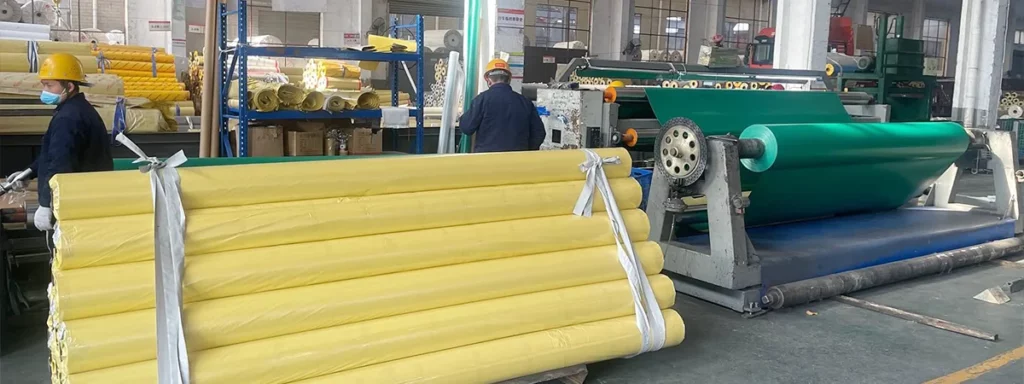
The PVC laminated tarpaulin produced by hot melt calendering has good air tightness. The PVC coated tarpaulin cloth produced by knife coating has good flexibility. The production cost and quality of both are similar.
The PVC laminated fabric production cost of cold lamination is relatively low, and it is mainly used to manufacture some economical tarpaulins and light box cloths. However, the quality of PVC vinyl tarp will be worse than that of hot melt calendering.
Finally, the PVC tarpaulin price is composed of the weight of the material, the specifications of the base fabric, the color and material performance of the tarp. Please be sure to let us know when you request a quote from us.
How to produce PVC tarpaulin rolls?
This is a simple OEM/ODM PVC tarpaulin roll production process, which can be changed in specific links according to the user’s product performance requirements. The specific core technical processes can be browsed below.
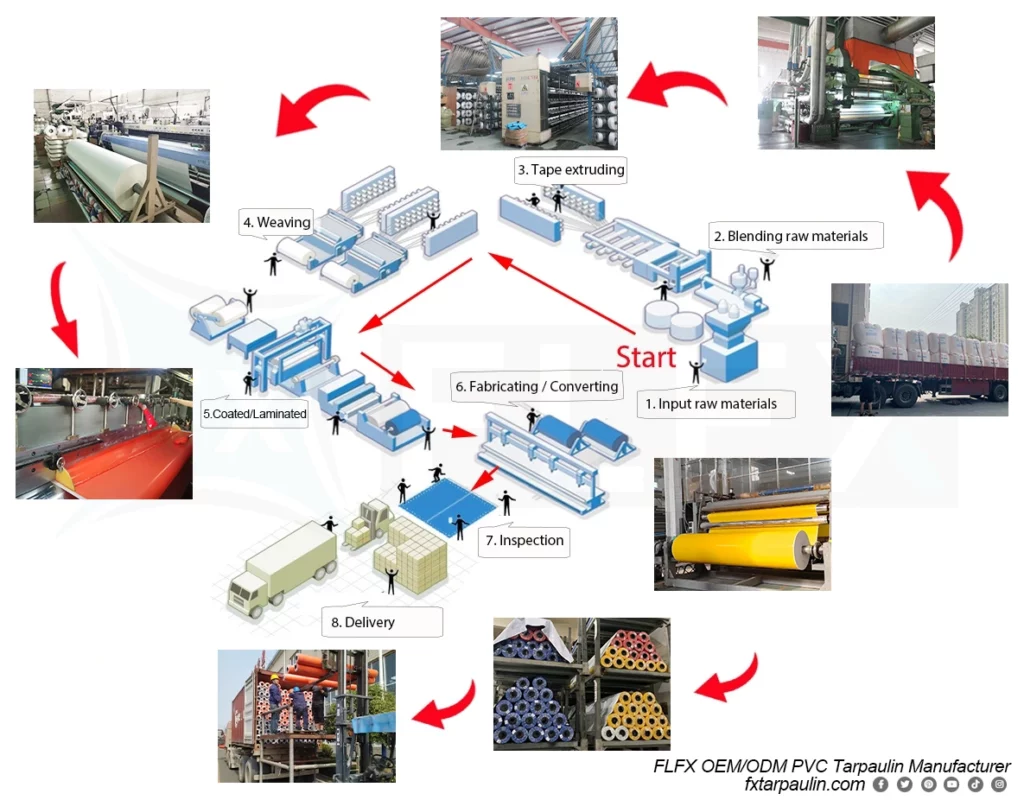
Before producing PVC tarpaulin rolls, we must first prepare PVC resin, various additives and base fabric materials. These raw materials need to be purchased, but in order to reduce the production cost of tarpaulin. We currently have 14 German warp knitting machines in use, providing polyester base fabrics for products of different specifications.
- Warp knitting machine: The warp knitting machine can produce different base fabric specifications (300×500 Dtex 18×12/inch, 500 Dtex 18×17/inch, 1000 Dtex 12×12/inch, 1500 Dtex 30×32/inch, 2200 Dtex 15×15/inch…) Denier refers to the thickness of the individual threads used in the fabric. A higher denier number generally indicates a more durable and long-lasting material.

There are two core processes for producing PVC tarpaulin rolls: knife scraping technology and lamination technology. These two manufacturing processes require 4 machines. Let me introduce them to you next.
Lamination technology is divided into cold lamination methods and hot melt calendering methods.
Cold Lamination Method (Cold lamination machine)
Cold lamination machine laminates two rolls of PVC film and base fabric lamination to form a PVC tarpaulin material. So in the first step, we need a calender machine to produce a thin and uniform sheet of PVC film from the PVC polymer.
- Calender machine: The calender machine is mainly used to produce various PVC products, including PVC coated fabric, PVC tarpaulin, vinyl flooring, PVC ceiling film, PVC flex banner and clear vinyl. The working principle of the calender machine is as follows:
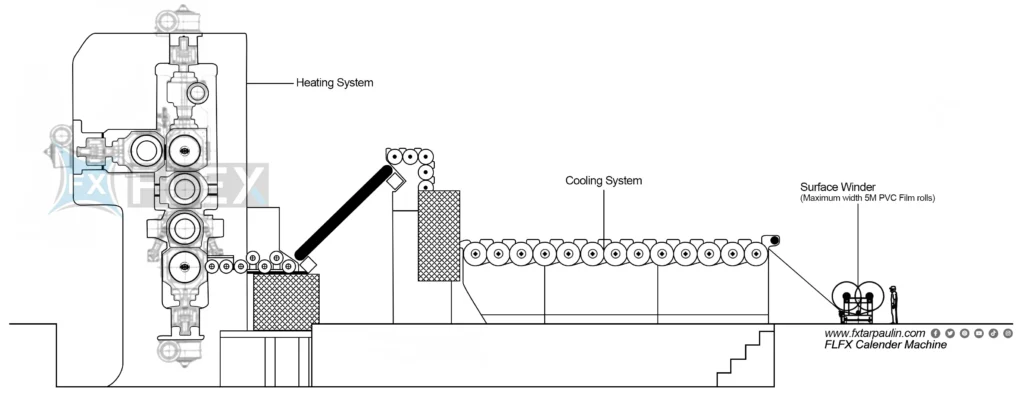
First, the raw material PVC resin is mixed with various additives, plasticizers, colorants, and stabilizers in an extruder, so that the PVC and various additives are fully stirred to form polymers with required properties, such as anti-aging, environmental protection, color, UV resistance or flame retardancy, etc. The PVC polymer is then introduced into a high-temperature roller system and rolled to stretch the material to the appropriate thickness and width. It is then rolled and cooled through multiple roller systems to form PVC films of different thicknesses with glossy, matte, or embossed effects. In order to meet the production demand for PVC tarpaulins and other products, FLFX manufacturer introduced 3 such 5m PVC calender machines from Germany.
This PVC film material, in addition to making PVC tarpaulins, can also be printed with different patterns and used as indoor PVC stretch ceiling films.
- Cold lamination machine: This machine is the first generation production machine in the industry and is mainly used to produce economical PVC tarpaulins and PVC flex banners. The working principle of the cold lamination machine is as follows:

We put the quality-inspected PVC film rolls and high-strength polyester fiber base fabric into the cold lamination machine. The material is introduced into the heated area through a series of roller systems for lamination. The maximum width of the produced PVC tarpaulin is only 3.2m. Due to the limited temperature and pressure of the roller produced by the machine, the PVC tarpaulin produced has low strength and short life. Commonly used in light truck tarpaulins ,PVC flex banners and agricultural cover tarpaulins.
This cold lamination machine process is short, fast, and has low machine operating costs, so the sales price of PVC tarpaulin roll is suitable for the low-end market. We have only purchased 2 of these cold laminating machines.
Hot Melt Calendering Method (Hot melt calendering machine)
- Hot melt calendering machine: In order to meet the needs of the mid-to-high-end PVC tarpaulin market, FLFX manufacturer introduced 8 hot melt calendering machines from Germany. One of the hot melt calenders has a maximum width of 5.6m. It can make us higher quality and stronger PVC laminated tarpaulin fabrics. Which can be used for tents, inflatable castles, covering tarpaulins, swimming pool villages, roller blinds, wall fabrics etc. The working principle of the hot melt calendering machine is as follows:
First of all, we cannot forget the quality inspection of PVC film and high-strength polyester fiber base fabric. Production employees will put two or five rolls of PVC film and Panama base fabric into designated positions of the hot-melt calender. After technicians adjust the machine according to the core technical parameters of production, the materials will be fully laminated in the machine’s high-temperature, high-pressure rollers; and then enter the cooling area through the complex roller system to form PVC laminated tarpaulin material. Finally, the PVC tarpaulin fabric is cut, rolled, and packaged according to the customer’s requirements. The width of PVC tarpaulin roll can be up to 5.1m.
The heating system of this hot-melt calender is much higher than the temperature and pressure of the cold-melt calender, which greatly improves the strength of the PVC polyester fabric. Moreover, its embossing roller and surface treatment system have also been upgraded, and through the surface treatment system, an acrylic coating can be added to the surface of the PVC coated fabric to achieve self-cleaning performance. Glue is also added to the PVC film and base fabric during the production process, and the PVC laminated tarpaulin has better adhesive properties, thereby also improving the service life and technical parameters of the product.
An ordinary production machine can only use two rolls of PVC film and base cloth for lamination. The hot-melt calender can laminate eight rolls of PVC film and base fabric at the same time, producing a thicker heavy duty PVC laminated tarpaulin fabric.
Knife Coating Technology
- Knife coating machine: A blade coater is an industrial device used in the manufacturing process of coating fabrics and PVC materials. The machine directly applies PVC polymer liquid to various types of substrates, eliminating the need for a calender to produce PVC film rolls. The working principle of the blade coating machine is as follows:

First, the worker will introduce the PVC polymer with specific properties into the liquid reservoir equipped with the machine. The feed system uses pumps and valves to control the flow and pressure of coating material on the tool or insert. The coating head is the main component of the machine and consists of a sharp blade or knife that is responsible for accurately and evenly applying coating material to the substrate. After the coating is applied, the substrate will go through a drying or curing system to solidify the coating material and finally form a PVC knife coated tarpaulin material.
This machine can not only produce PVC coated cloths, but also textile banners and Class A fire retardant fiberglass cloths. Interested customers can contact us to request product information.
This modern blade coater FLFX factory has 1 set 5.6M knife coating machine and 3 set 4M knife coating machines. This machine is equipped with an advanced control system that can adjust various parameters such as coating thickness, speed, temperature and pressure. This technical process has also brought high-quality PVC coated cloth materials to many industries.
The quality and cost of the PVC tarpaulin produced by the hot melt calendering method and the knife coating method are similar. The specific choice of these two processes is actually determined based on the final application of the material. You can also directly tell us the materials needed for the project through the backend, and let us recommend more suitable tarpaulin material solutions for you.
PVC Tarpaulin Roll Packaging Method.
We have many options for PVC tarpaulin roll packaging. The main materials include plastic film, kraft paper and paper tubes. For ordinary packaging, we will directly put kraft paper on the PVC tarpaulin roll. This kraft paper can prevent rainwater from penetrating into the material, and can also well protect the surface of the PVC tarpaulin roll from being scratched during transportation. In some cases, we will also wrap a layer of plastic film inside the kraft paper. Of course, this is completely according to the customer’s wishes. In OEM service, we can help customers print their LOGO on kraft paper, which requires additional printing fees.

The second packaging method is to add a layer of paper tube to the kraft paper, and its appearance can bear the weight of an adult. The function of this paper tube is to protect the PVC tarpaulin material from being squeezed and deformed during lifting and transportation. Of course, we also provide services of printing logos on the outside of paper tubes.
If neither of these two packaging methods satisfy you, you can also put forward your packaging ideas. And FLFX manufacturer will actively cooperate with you to complete the packaging method you want. When the customer asks for a price, there is no specific requirement for the packaging method of the PVC tarpaulin. Our quotation basically includes the price of the kraft paper packaging cost, and there will be no additional charges.
How to PVC tarpaulin for sale?
We are an OEM/ODM PVC tarpaulin supplier. The maximum width can produce 5.1m PVC tarpaulin rolls. Our PVC tarpaulin for sales method: The width of each roll is more than 1.8m, and the minimum order quantity is 2000m. The width of each roll is less than 1.8m, and the minimum order quantity is 4000m. The color, base fabric strength, and special properties of PVC tarpaulin can be customized according to customer requirements.
We currently have two PVC tarpaulin production bases, and the third one is expected to be put into use in 2025. All of our PVC tarps for sale are produced according to customer orders. FLFX PVC tarpaulin material supplier does not have any inventory for sale, which can ensure that all tarpaulin products are without middlemen. Of course, the more quantity you purchase, the lower the price of our PVC tarpaulin for sale will be.
The products in the PVC tarpaulin fabric factory warehouse are ordered by customers from all over the world and are ready to be shipped. We also offer efficient shipping and delivery processes. Clearly communicate shipping costs and delivery times to customers. It is recommended to work with a reliable logistics company to ensure timely and safe delivery.
It is very important to find a reliable PVC tarpaulin supplier or manufacturer. We are not only able to provide customized options but also have comprehensive after-sales service and quality assurance. For every order and every customer, we will have a professional PVC tarpaulin expert to connect with you. If you want to be a local PVC tarpaulin agent, or your project requires PVC tarpaulin materials. We are your best choice, contact us to ask for competitive prices and high quality products.
Of course, you can also tell our CEO through the website for all after-sales issues. We collect customer feedback and use it to improve our products and services continuously. Conduct customer satisfaction surveys to identify areas for improvement.

 '
'
